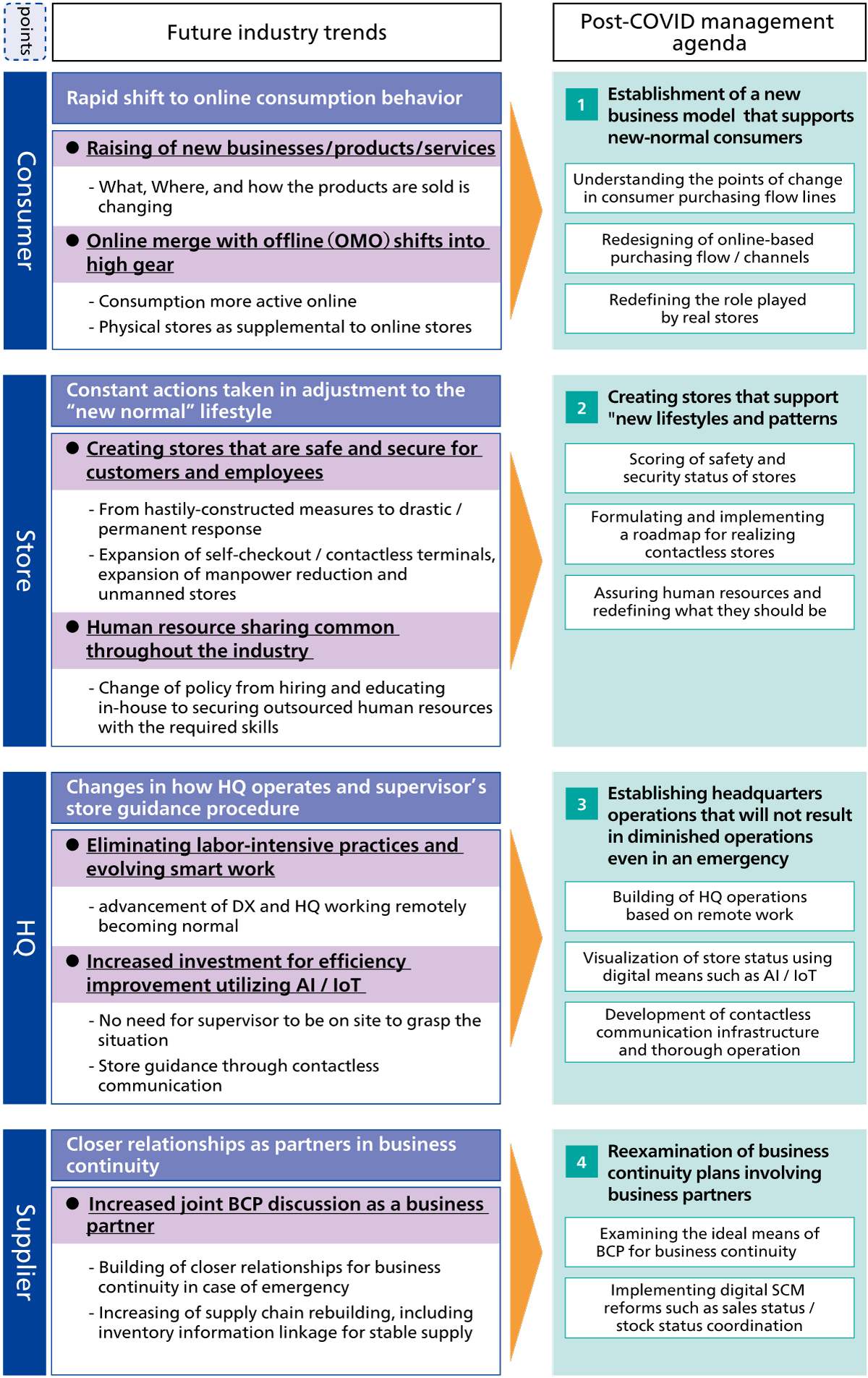The drastic changes in the external environment caused by COVID-19 have had various effects on the business of the retail industry. The crisis has created stark contrasts in business performance between types of business operations.
Due to the government's request for essential business continuity, retail businesses that handle food and daily necessities such as supermarkets, drugs stores, and convenience stores (excluding stores located in office districts) have remained in good condition as consumers wait in long lines at cash registers to buy products, many of which have even sold out. On the other hand, retailers of shopping goods and luxury items deemed nonessential, such as apparel and home appliances, have stagnated.
Next, we would like to focus on the changes in the business processes of the retail industry that were particularly affected by COVID-19. In retail businesses handling food and daily necessities, some examples of quick action taken include the application of floor stickers to indicate appropriate social distancing positions for customers waiting in check-out lines. Vinyl curtains were also installed at cashier check-out counters, in part to protect employees. In addition, actions such as disinfection of shopping carts and individual packaging of products to prevent droplet infection have been added to everyday routines in response to customer demand for safety, which have added to employee fatigue. Some tried to induce customers to use electronic commerce (EC) by placing orders online for in-store pick-up. The aim was to disperse in-store customer visits, but the capacity of pre-order systems was too small to achieve the anticipated outcome.
Company headquarters, meanwhile, were forced to act urgently to achieve business continuity while responding to the sudden shift to remote workstyles. They had to implement changes such as granting authority to their employees to allow them to use company PCs at home, and to arrange for paper documents to be taken off company premises. Another example is the rotation systems they created for employees. One characteristic of the retail business is that when storefronts are fully operating, the headquarters that support them can’t stop operating either, so they were forced to make big changes in their conventional working methods. In addition, because they were unable to receive stable supplies of products from business partners, stores had to come up with new operations to deal with stockout issues, such as limiting purchases to one per customer for certain products.
In this way, business processes throughout all areas of the retail industry have felt the impact, and have been dealing with these countermeasures for several months now.






